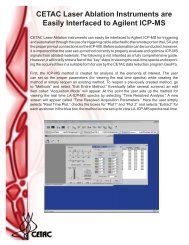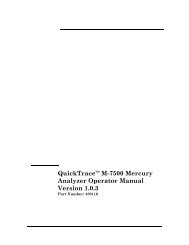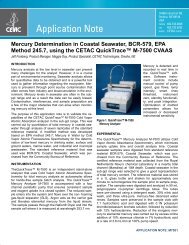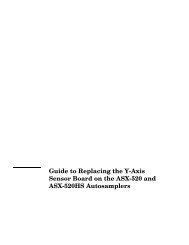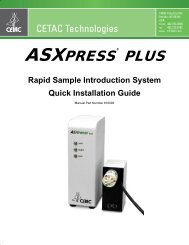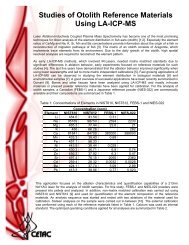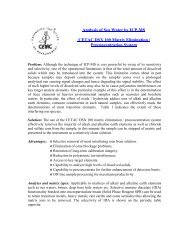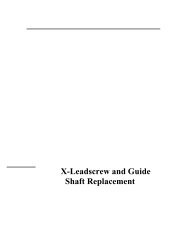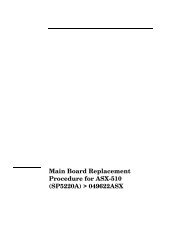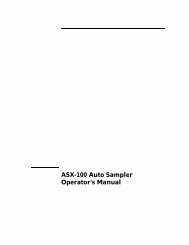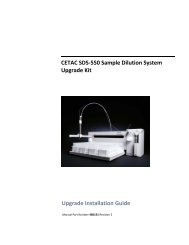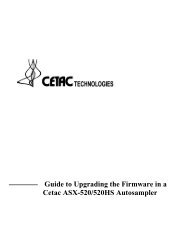Marin-5 Operator's Manual - CETAC Technologies
Marin-5 Operator's Manual - CETAC Technologies
Marin-5 Operator's Manual - CETAC Technologies
You also want an ePaper? Increase the reach of your titles
YUMPU automatically turns print PDFs into web optimized ePapers that Google loves.
<strong>Marin</strong>-5 Operator’s <strong>Manual</strong><br />
Troubleshooting the <strong>Marin</strong>-5<br />
• Low or No signal from the ICP-AES or ICP-MS. Check the<br />
sample out line to make certain the Tygon® tubing is properly<br />
connected to the torch.<br />
• Check the o-rings in the nebulizer port on the front of the<br />
spray chamber. Worn-out o-rings may cause gas to leak out of the<br />
spray chamber. Turn off power to the <strong>Marin</strong>-5 and allow the spray<br />
chamber to cool (30 minutes). Then remove the nebulizer port fitting<br />
and replace the o-rings. Note that there are 2 sets of o-rings (outer<br />
and inner). See Figure 7-1.<br />
Figure 7-1. Nebulizer Port with o-rings.<br />
2 Sample Flow Rate Problems<br />
• The liquid flow rate is too high. The liquid flow rate by selfaspiration<br />
is determined by the nebulizer gas flow. Decreasing the<br />
nebulizer gas flow will decrease the liquid flow rate. Consequently,<br />
signal intensity may decrease as a result. Proper nebulizer gas flow<br />
rates should be optimized based on each individual application.<br />
Normal criterion for assessing performance are signal to<br />
7-4



